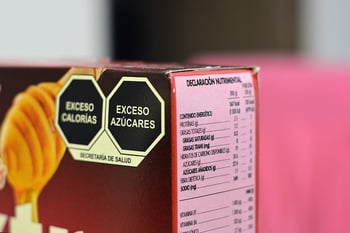 Leading cheese sauce manufacturers often choose fresh block cheese in their formulations because it is a very functional ingredient. Fresh cheese provides the flavor and texture consumers want which can’t be replicated by starches, gums or cheese powders on their own. It often requires a multi-ingredient solution.
Leading cheese sauce manufacturers often choose fresh block cheese in their formulations because it is a very functional ingredient. Fresh cheese provides the flavor and texture consumers want which can’t be replicated by starches, gums or cheese powders on their own. It often requires a multi-ingredient solution.
While R&D professionals and formulators want to improve nutrition and optimize costs by replacing a portion of fresh cheese, there’s just no single-ingredient substitute.
Or is there?
See why cheese powders and starches on their own often fall short, and why Grande Gusto is the one-stop shop for functionality that many cheese sauce manufacturers are looking for.
VIDEO: See Grande Gusto Product Demo
Cheese Powder Limitations in Cheese Sauces
Cheese powders, while convenient, often fall short when it comes to delivering a full sensory impact because they lack the textural benefits, rich dairy flavors and body of real cheese.
Queso, for example, has a tacky, almost stringy consistency. Those textural qualities are driven by the cheese itself and can’t be replicated with powdered cheese alone. Formulators will need to add starches or gums to make up for viscosity loss.
While some cheese powders can help maintain flavor, there’s typically flavor degradation, especially through freeze/thaw cycles in refrigerated or frozen entrees. Formulators often need to include additional flavorings and sodium to boost cheesy flavors. Not only does this add more SKUs to their inventory, it also creates longer ingredient lists.
Starch & Gum Limitations in Cheese Sauces
The sharp, zesty flavors that most consumers find desirable in a cheese sauce come from the lactic acid in sharp cheddar cheeses. This is the compound that develops and gives aged cheddar its distinctive flavor profile. Replicating lactic acid notes with alternative ingredients is a major challenge.
In addition to savory flavor notes, fresh cheese brings a viscous, creamy texture that coats the mouth and brings an authentic dairy experience from start to finish. Replacing a portion of fresh cheese with starches and gums can help replicate viscosity and thickness, but does nothing in terms of taste and maintaining the zing of lactic acid.
Just as cheese powders need additional texturizers, starches and gums will require additional flavors to match the cheese notes.
How to Maintain Flavor & Texture in Cheese Sauces
As you can see, formulators who want to reduce the use of fresh cheese to optimize costs, improve nutrition and minimize storage requirements typically need to use multiple ingredients to deliver comparable flavors and texture.
That’s why many formulators turn to Grande Gusto when reformulating cheese sauce recipes. Grande Gusto is a high-quality, reduced lactose whey that provides authentic cheese and lactic acid notes right from the start. Its proprietary formulation provides outstanding structure, allowing formulations to maintain a rich, velvety texture even when held for prolonged periods on a hot-hold steam table.
Most low-fat formulas lose texture and have a thin, runny consistency. Grande Gusto provides an authentic dairy coating on the palette, not just the visual viscosity on the spoon. Starches provide visual viscosity, but immediately begin to break down in the mouth due to amylase enzymes in saliva. Grande Gusto remains thick and creamy through the finish to create an indulgent eating experience.
Grande Gusto truly can be a one-stop shop. Formulators can take their formula as it stands today and replace a portion of their fresh or block cheese with Grande Gusto without compromising flavor or texture. Having a single ingredient that addresses multiple functional challenges makes it much easier to reformulate because formulators can maintain controls. It can save time and resources because they’re manipulating fewer ingredients to get to the final desired result.
Another benefit of Grande Gusto is its clean-label status and improved nutrition. It’s a natural ingredient that is recognized by consumers, and it can reduce fat, calories and sodium. Sodium reduction, in particular, is top of mind for many formulators. Most cheese powders add sodium to make up for lost flavor. But Grande Gusto’s proprietary balance of minerals contributes salty and savory flavors without actually increasing sodium levels.
Want more proof? Check out our case study below highlighting a cheese sauce reformulation and its impressive results. Then, contact our team of food scientists to talk through your reformulation challenges and request a sample of Grande Gusto. You’ll be able to see for yourself just how different it is from powdered cheese, starch or gum alternatives.




